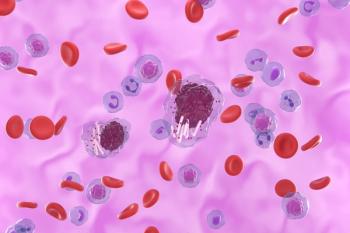
Strategies to Address Veteran Health Disparities Beyond the Battlefield
Key Takeaways
- Veterans experience high rates of mental health disorders, including PTSD and depression, often linked to military service stressors and trauma.
- Physical health challenges, such as musculoskeletal injuries and exposure to hazardous materials, contribute to long-term health issues for veterans.
Despite their profound sacrifices, veterans and active military members disproportionately face significant physical and mental health issues stemming from their service, with many struggling to access the affordable and comprehensive care they need.
Veterans and active military members frequently encounter service-related physical and mental health challenges, alongside high rates of homelessness, often leading to underserved needs and highlighting the necessity for more accessible and affordable initiatives.1
Prevalence of Mental Health Conditions
The American veteran population has various military service branches, each with unique military experiences.2 Medical records of veterans show doctors diagnosed 1 in 3 patients with at least 1 mental health disorder, and 41% of patients received a diagnosis of either a mental health or behavioral adjustment disorder. Many veterans develop substance use disorders (SUDs) because of military service related stressors as well.
Oftentimes, doctors diagnose veterans with SUDs, and these veterans also have mental health challenges such as posttraumatic stress disorder (PTSD), also known as “shell shock” or “combat fatigue.” While PTSD does not limit itself to veterans and active military, researchers found male veterans experience PTSD almost 4 times more than non-military men. Traumatic brain injuries, military sexual trauma, sleep problems, substance use, pain, and other psychiatric disorders link to veterans and active military with PTSD.
Ultimately, depression ranks as one of the most common mental health disorders, with some research indicating about 9% of all appointments in the Veteran Affairs (VA) health network are related to depression.3 Additional research found veterans experienced depression as their most prevalent health disorder (13.5%) compared with PTSD (9.3%), SUD (8.3%), and anxiety disorders (4.8%).
In 2021, the average veteran suicide rate per day among US adults was 17.5, according to the National Veteran Suicide Prevention Annual Report.4 Veteran suicides per day rose from 16.4 in 2001 to 17.5 in 2021, with the highest average of suicides a day in 2018 (18.4 a day).
Particularly, women, especially those with active PTSD, have a higher risk of dangerous pregnancy complications and are at more than twice the risk of suicide than non-veteran women.5 Additionally, 1 out of every 5 women veterans report having experienced sexual trauma while serving in the military. Another 1 out of every 4 women veterans report having experienced sexual harassment by male veterans on VA grounds alone.
Researchers found sexual and gender minority veterans and/or active military members experience higher rates of PTSD, depression, and problematic alcohol use relative to a VA's comparison sample.6 More specifically, transgender service members experienced increased odds of anxiety, PTSD, depression, and suicidality compared with their cisgender peers.
Physical Health Challenges and Homelessness
Veterans and active military report physical health challenges or injuries, particularly from serving in combat zones.7 Musculoskeletal problems, chronic pain, and loss of limb function are among some of the potential physical attributes military service causes. Oftentimes, injuries lead to long-term pain management treatment and reduced mobility, which requires specialized care and rehabilitation.
Common physical health challenges also include sprains and strains, usually in the ankles and knees.8 Back and shoulder injuries are also common, as well as tinnitus and hearing loss from exposure to loud noises. Additionally, shrapnel and gunshot wounds, along with lost limbs from combat or post combat amputation, are just a few physical disabilities veterans and/or active military may endure.
Past exposure to hazardous chemicals, radiation, air pollutants, occupational hazards, warfare agents, noise, and vibration increases the overall risk of health problems.2 For instance, researchers have linked long-term health issues with Agent Orange exposure in Vietnam veterans, putting them at greater risk of cancer and various other deadly diseases.7 Veterans who served in either Iraq or Afghanistan experienced hazardous materials like burn pits, asbestos, or chemical agents, which can lead to long-term respiratory diseases and cancer subtypes.
One study found veterans reported sustaining physical injuries in the workplace, with most injuries stemming from a lack of protective equipment or poor health and safety regulations.9 Veterans more frequently reported long-term health difficulties because of a lack of protective equipment. They also described experiencing hearing loss after a lack of ear defenders in loud engine rooms or on shooting ranges, as well as skin cancer caused by lack of sun protection during training or deployment.
Veterans in the general US adult population were 23% less likely to be employed (95% CI, 0.65-0.73) compared with nonveterans, according to a cross-sectional analysis of data from the Medical Expenditures Panel Survey.10 Researchers found veterans with diabetes had 25% lesser odds of being employed compared with those without diabetes (95% CI, 0.65-0.85) and veterans with hearing loss were 20% less likely to be employed than those without (95% CI, 0.68-0.93). Veterans with stroke or emphysema had 36% (95% CI, 0.49-0.83) and 46% (95% CI, 0.40-0.72) lesser odds, respectively, of being employed than veterans without those conditions.
In addition to mental and physical health challenges, especially when employment impacts them, veterans often experience high rates of homelessness.2 About 49,933 veterans are homeless and continue to face additional burdens of military related factors. Since 2023, a 7.5% reduction in veteran homelessness was announced by the National Coalition for Homeless Veterans.11 Data showed 32,882 veterans experienced homelessness on a single night in January 2024, representing a historical low. The work done thus far for veteran homelessness has been successful, but we must continue to support the population as accessible and affordable care remain a challenge.
Veterans' Benefits and Policy Shifts
During World War I, the federal government introduced 2 types of new veterans’ benefits which included insurance and vocational training for the disabled.12 In 1930, Congress created the VA to consolidate all veterans’ benefits and services through a single federal agency.
The VA has grown and assumes responsibility for short and long-term health care, housing options, life insurance, pensions, education stipends, and assistance in jails and courts.13 As the Trump administration began cutting federal spending, these agencies forced countless employees to experience hardships. The VA benefits system enrolled 400,000 veterans from March 2023 through March 2024 and expanded eligibility for former service members to receive VA health care. However, Trump’s cuts will make it more difficult for the VA to provide health care for these newly eligible veterans.
Trump’s decision rolls back former President Joe Biden’s investment in the VA to address long-standing staffing issues. For the past few years, staff increases shortened wait times while they provided care to more veterans. Only a year later, the VA now faces job cuts that could contribute to fundamental changes in VA health care, leading to higher costs and lower quality.
The Trump administration also aims to prevent gender-affirming care for veterans, cut the Veterans Crisis Line, slash investment research, with other VA benefits looming. Republican affiliates in Congress have expressed a desire to eliminate food stamps and Medicaid, most the country’s health insurance. Over the past decade, about 10% of veterans use Medicaid for at least some of their health care benefits, and 40% rely on Medicaid for all their health care.
Despite Medicare Advantage (MA) receiving $12,000 annually in capitated payments per enrollee, about 1 in 10 veterans have no Medicare services MA pays for per year.14 Paying MA plans current annual capitated rates to cover veterans whose care the VA primarily pays for may not be fully justified by supplemental vision and dental care benefits, as related visits and costs were similar between veterans enrolled in MA and those in traditional Medicare.
Negatively impacted veterans are gaining increased visibility against the administration, which has emphasized the stark reversals of government-promised protections and services.13 Ensuring that veterans and active military members receive the comprehensive, accessible, and affordable managed care they deserve remains a critical imperative, demanding sustained advocacy, and robust policy initiatives.
References
1. Silverstein J. Bridging the gap: how community organizations support veterans’ access to health care. Institute for Defense & Government Advancement. January 23, 2025. Accessed May 29, 2025.
2. Olenick M, Flowers M, Diaz VJ. US veterans and their unique issues: enhancing health care professional awareness. Adv Med Educ Pract. 2015;6:635-639. Published 2015 Dec 1. doi:10.2147/AMEP.S89479
3. Veteran depression: risks, signs & treatment options. Veteran Addiction. October 15, 2024. Accessed May 30, 2025.
4. 2023 National Veteran Suicide Prevention Annual Report. US Department of Veterans Affairs. 2023. Accessed May 30, 2025.
5. Leonard N. The ongoing veteran healthcare crisis. National League of Cities. November 8, 2019. Accessed May 30, 2025.
6. Holloway IW, Green D, Pickering C, et al. Mental health and health risk behaviors of active duty sexual minority and transgender service members in the United States military. LGBT Health. 2021;8(2):152-161. doi:10.1089/lgbt.2020.0031
7. Veteran health care challenges: navigating the complexities of treatment and support. Tcare.ai. 2025. Accessed May 30, 2025.
8. Veterans and military health. MedlinePlus. 2019. Accessed May 30, 2025.
9. Williamson V, Harwood H, Greenberg K, Stevelink SAM, Greenberg N. Impact of military service on physical health later in life: a qualitative study of geriatric UK veterans and non-veterans. BMJ Open. 2019;9(7):e028189. doi:10.1136/bmjopen-2018-028189
10. Mosalpuria K, Bailey EV, Ko H, Hansen EJ, Wilson FA. Chronic physical and mental health conditions associated with employment status in veterans. AJPM Focus. 2024;100242. doi:10.1016/j.focus.2024.100242
11. Higgins D. 2024 point in time count. National Coalition for Homeless Veterans. November 13, 2024. Accessed May 30, 2025.
12. VA history summary. US Department of Veterans Affairs. Published July 6, 2022. Accessed May 30, 2025.
13. 5 reasons federal cuts are hitting veterans especially hard. PBS News. March 16, 2025. Accessed May 30, 2025.
14. McCormick B. Supplemental dental, vision benefits may not justify MA payments for VA-covered veterans. The American Journal of Managed Care®. May 22, 2025. Accessed May 30, 2025.
Newsletter
Stay ahead of policy, cost, and value—subscribe to AJMC for expert insights at the intersection of clinical care and health economics.









































